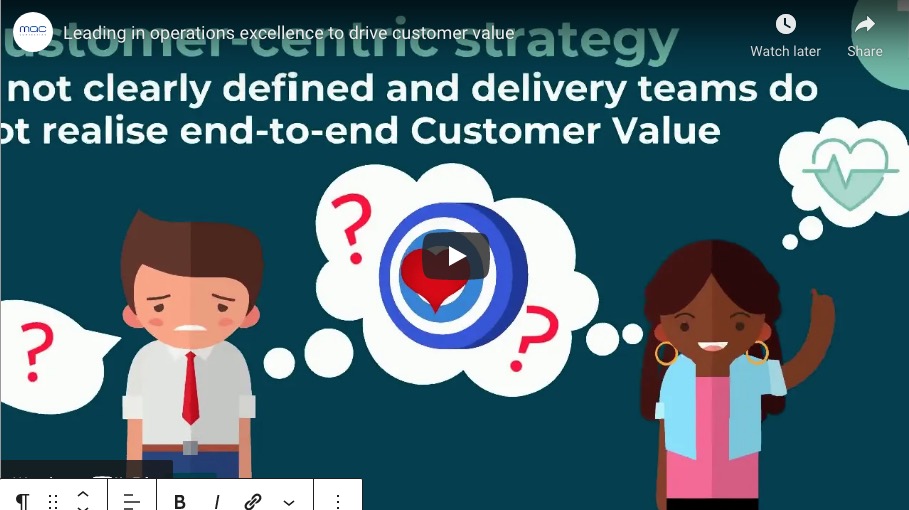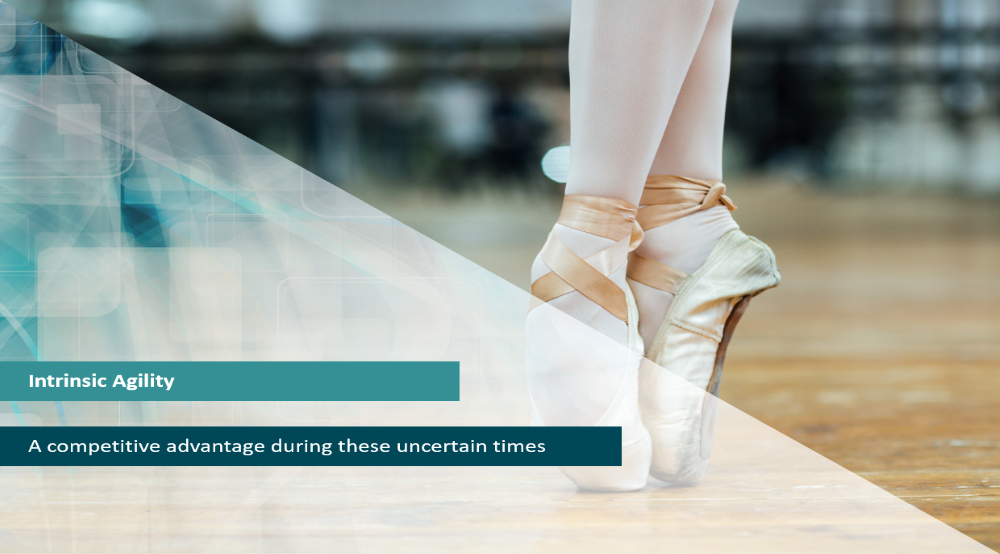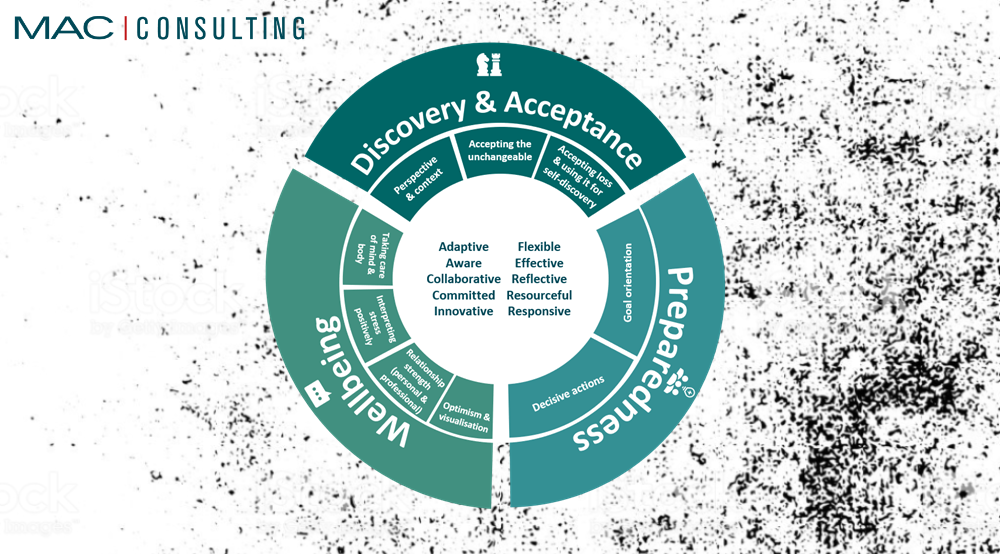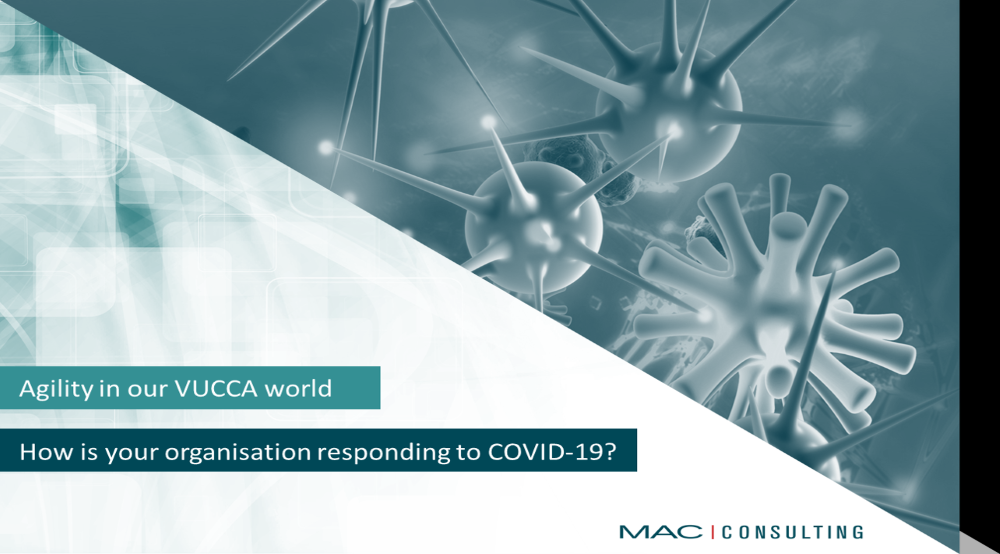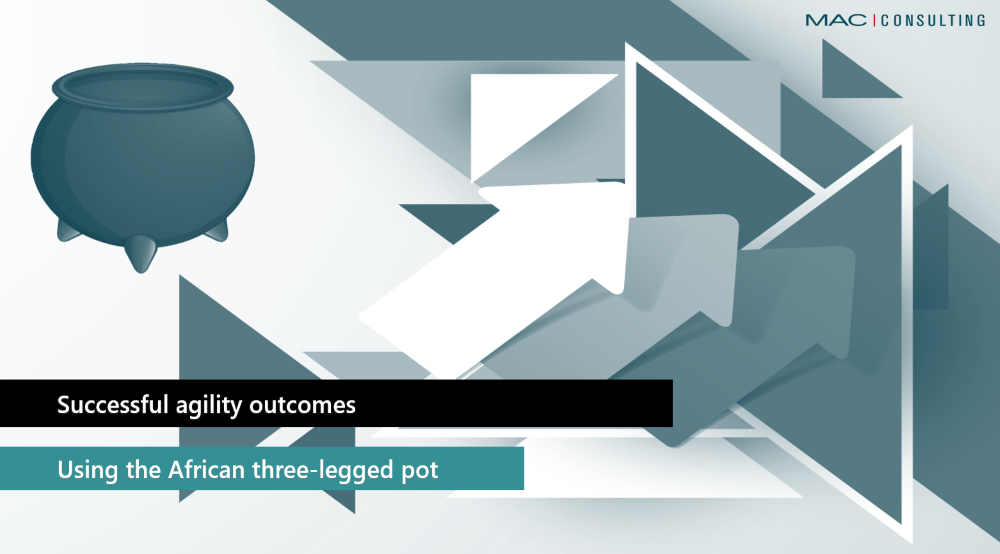Posts by Craig
The Agile Parenting Journey: Part 1
Agile: adjective, noun: Agility (Oxford dictionary)– able to move quickly and easily; nimble. In the professional world, a more formal definition of Agility is the focus and commitment to achieve the right outcomes* in a timely manner despite the impact of situations that are unpredictable, uncertain, ambiguous, complex etc. through timely inspection and adaption, leveraging…
Read MoreSurviving Disruptions Through Antifragility: Part 2
Changing Priorities In part 1 of this article we looked at what it means to be antifragile and emphasised the need for organisations to engineer themselves towards being antifragile. In this part we map important parts of an organisation’s identity to antifragility. It might come as little surprise that what we thought were priorities before…
Read MoreLeading in Operations Excellence to Drive Customer Value
Organisations always want to deliver an optimal customer experience, but don’t fully realise what is hindering them from doing so. In this video, we explore some of the typical challenges that organisations face when trying to drive Customer Value, and look at what organisations can do to truly embed Customer Value into their business. Connect…
Read MoreSurviving Disruptions Through Antifragility: Part 1
Antifragile “We have no idea what to expect!”, “The world will never be the same!”, “It’s the end of the world as we know it!” (for about half of you the chorus of a famous R.E.M. song just popped into your head). Simple phrases that we hear every day from colleagues, friends, family, and the media.…
Read MoreIntrinsic Agility – a competitive advantage, especially during COVID-19
COVID-19 has created overnight challenges and requires a high degree of inspection and adaption, with urgency, for continued value delivery to customers and to ensure viability and sustainability of organisational business models. People competencies are a crucial contributor to organisational competencies. Some of which have become more crucial than before in the current crisis. I…
Read MoreResilience During a Time of Crisis
Resilience: the ability to bounce back in the face of adversity. The world is currently under immense pressure. So much has happened since President Ramaphosa’s first address to the nation. The world seems to have been brought to a standstill by the rapidly spreading COVID-19 virus, which is wreaking havoc in ways that none of…
Read MoreAgility During the COVID-19 Crisis
COVID-19 is one of the biggest VUCCA moments in recent times. Intrinsic agility* is being demonstrated across all levels in our country to ensure that risks are managed effectively and to tap into the additional benefits of an agility mindset and behaviours. *Intrinsic – something that is inbuilt and comes of naturally in given circumstances…
Read MoreThe Transition to Working Remotely
Teams are currently transitioning to working remotely, which comes with a range of new challenges. MAC has developed a ‘getting started quick guide’ on how to successfully work remotely to assist with these challenges. Transitioning to working remotely unearths certain challenges for teams: Different scenarios call for different digital solutions. Different team members prefer different…
Read MoreThe African Three-Legged Pot Analogy for Successful Agility Outcomes
When organisations decide to focus on ‘Being Agile’ or ‘Agility’, they hire agile coaches to guide their teams on this journey. Many decision-makers think that just the presence of the agile coach will guarantee agility outcomes from their delivery teams. This is a fallacy and many organisations risk their ‘Being Agile’ journey due to this…
Read MoreYour Relationship with Agile
The word ‘agile’ has different connotations to it – some are skeptical about it and may think of it as a passing fad, while others feel it is a ‘cool’ buzzword and find that associating with anything that represents agile adds to their ‘coolness’ quotient. Some may see the promise and potential, while some are…
Read More
